Warframe Mods Guide: Applying, Combining, Fusion, Transmutation, Catalysts, Reactors, and Forma
How to modify your Warframe and weapons to be as powerful and efficient as possible

Mods are the primary means of progression in Warframe. Sure, your robot suits and deadly weapons will level up over time, yet most of the stats that actually determine how much damage you give and take comes from the mods you attach to your gear.
There’s more to it than that, of course - much, much more. Which is exactly why we’ve made this guide. Warframe is complicated enough as it is, so the least we can do is show you not only how the different mods interact, but how to acquire and upgrade them as well. This guide also covers the many different kinds of mods you can find for weapons and Warframes - from the most basic necessities right up to randomized Riven mods.
There’s a lot of ground to cover so let’s get right to it. This guide will cover the how to go about Acquiring Different Mods, Applying and Combining Mods, Fusion and Transmutation, plus Catalysts, Reactors, and Forma.
Acquiring Different Mods

Normal Mods
Mods make the world of Warframe go ‘round. They affect basic statistics like health, shields, energy pool, and ability cooldowns. On weapons they determine everything from damage types to whether or not you can shoot through walls. They even affect you companions - both A.I. drones and pets as well as human players standing beside you - with bonuses and unique abilities.
Mods, like nearly every basic item in Warframe, drop like candy over the course of regular missions. Killing enemies and destroying containers will drop common ones regularly. Survival, Spy, Excavation, Interception, and Defense missions will also dish them out randomly as rewards for completing objectives. So you should have no trouble finding the most basic necessities.
Not all Mods are created equal, however. Many different classes of Mod exist beyond the basic ones you’ll find on the battlefields of Mars and Ceres. Here’s a quick breakdown of some of the broad classes of unique Mods, as well as how to earn them.
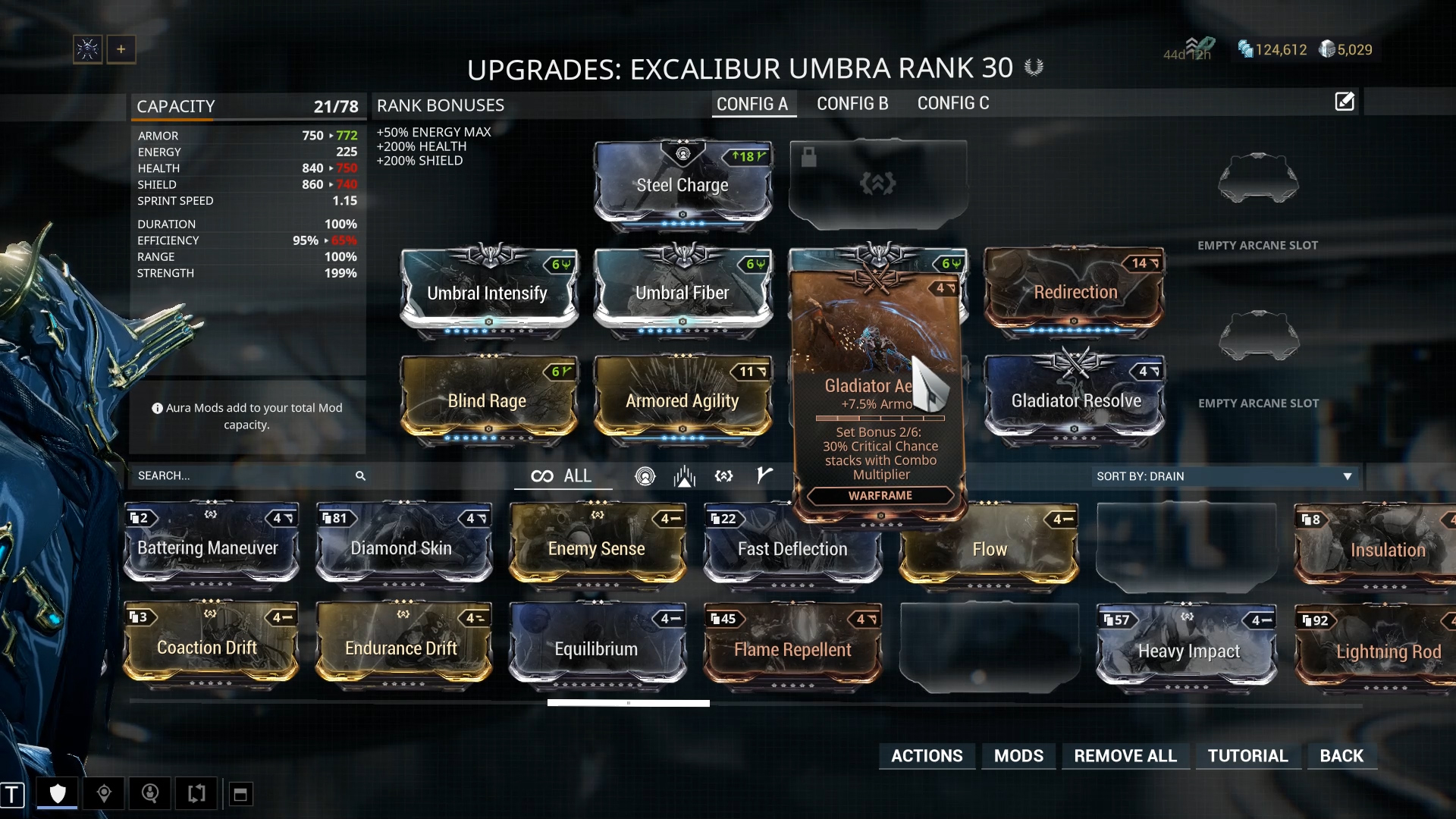
Set Mods
Set Mods are exactly what they sound like: Mods that come in sets. Most of them come in packs of six and provide increasingly powerful benefits depending on how many you equip at one time. You can typically tell them apart by their matching prefixes, like Gladiator Resolve and Gladiator Rush.
They’re typically found as rewards on Cetus, Earth’s open-world zone - either as random drops or as rewards for completing bounties. Yet two special sets are also rewarded automatically for completing The Sacrifice questline.

Nightmare Mode Mods
Whereas most Mods only provide one bonus - like fire or toxic damage - Nightmare Mods offer two. This makes them incredibly useful and efficient since all equipment can only hold so many Mods at one time.
To earn them, you need to play on “Nightmare Mode” - a higher-than-normal difficulty setting that’s available for one mission on each planet. To unlock that you first need to beat every single mission on said planet. Then, every eight hours, a mission will be randomly selected for Nightmare Mode.
Besides just being harder, Nightmare missions come with modifiers that make them even trickier. These can include taking away your Warframe’s shields, constantly leeching your health, and a whole lot more. So it’s usually best to play with other human beings to increase your odds of success.
Unfortunately, the Nightmare Mods you earn are usually random. You won’t know what you worked so hard to earn until you’ve finished it.
The one exception is the slightly rare occurrence of Nightmare Mode Alerts - even more time-limited events that pop up on the star map from time to time. These Alerts tell you which Nightmare Mod you’ll earn for completing the mission. Which makes them a good way to get any such Mods you’re missing. The downside is that these Alerts always have the “No Shields” modifier, plus up to one more.
That makes Warframes that can self-heal, have large pools of hit points, and turn invincible incredibly useful for Nightmare Alerts. If you can, consider bringing one of the following frames: Nidus, Valkyr, Inaros, or Trinity.
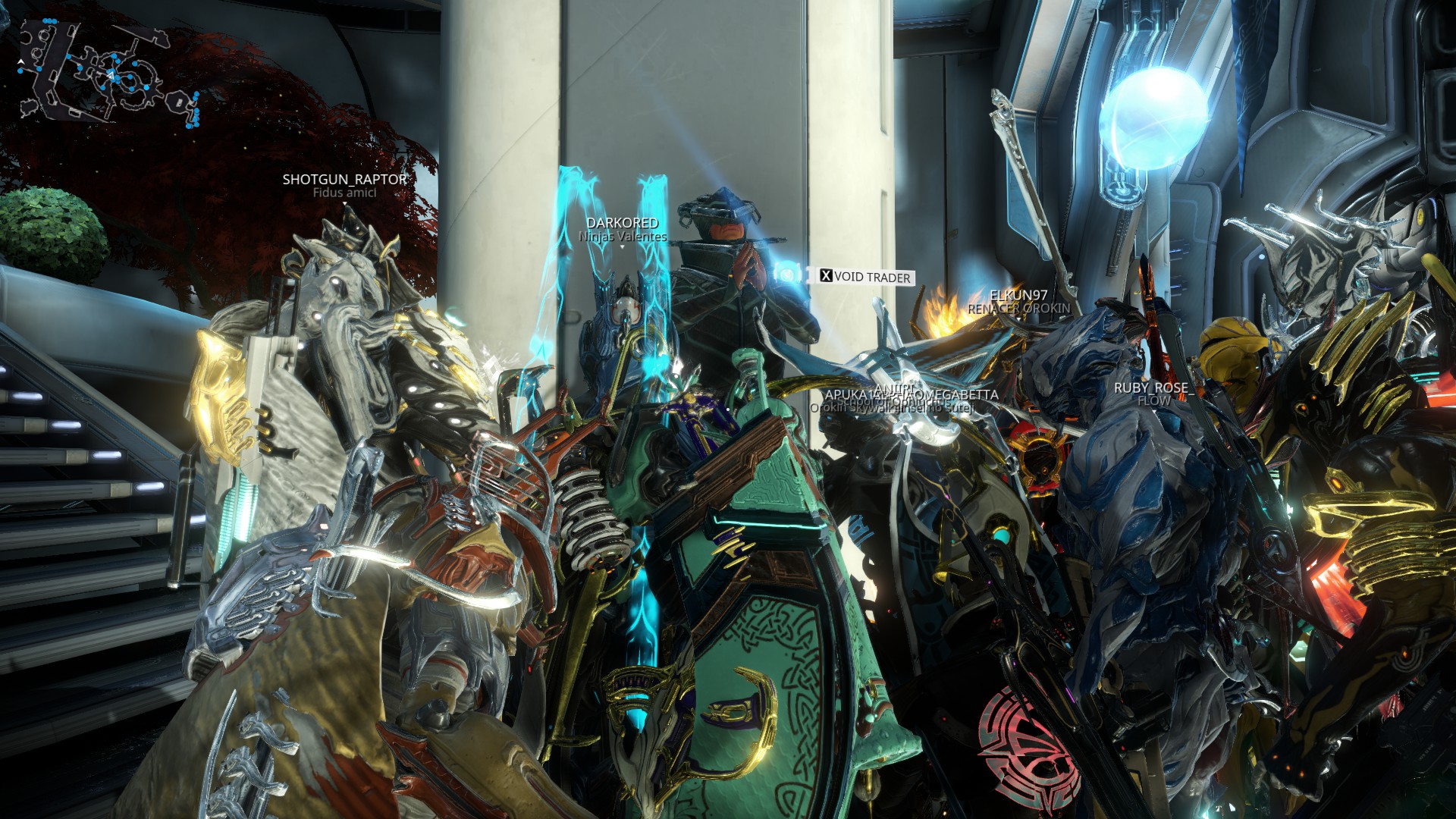
Primed Mods and the Void Trader
Primed Mods are similar to their Nightmare counterparts in that they provide extra bonuses that normal Mods don’t. Instead of buffing two statistics, however, Primed variants offer extra maximum oomph than more common Mods. For instance, the “Point Blank” Mod increases the overall damage of shotguns, whereas “Primed Point Blank” does the same thing except that it gives more damage than the standard version.
What’s irritating is that acquiring Primed Mods is a hefty mix of hard work and pure luck. They can only be purchased with a unique currency called Ducats. Ducats can only be earned by selling Prime parts (see our Warframe Crafting guide linked above for details on how to get those) to special kiosks at public player spaces on Mercury, Venus, Earth, Saturn, Europa, Eris, and Pluto. Look for the nodes on these planets called “Relays” and load in. You’ll see the kiosks towards the middle of the main concourse, usually surrounded by other players.
Now here’s the annoying part: you can’t actually spend your Ducats whenever you want. You have to wait for a special NPC called Baro Ki’Teer, the Void Trader, to appear in one of the Relays somewhere in the solar system. This happens only once every two weeks and only for 48 hours. Once Ki’Teer is gone, you’ll have wait another half-month before he returns.
All you Destiny players out there might notice some similarities between Baro Ki’Teer and that game’s limited-time trader, Xur. Also like Xur, the Void Trader’s wares are semi-random. That’s right! Even once you farm your Prime parts, sell them for Ducats, and wait patiently for Ki’Teer to arrive, there’s no guarantee he’ll have the Primed Mods you need.
If he does, however, you can pick them up for the special currency and a stipend of basic credits. Try to make sure you have plenty of both before the trader arrives. That way you’re not scrambling to farm Ducats and credits during his limited window. To help with that, you can find a real-time clock showing when Baro Ki’Teer is set to arrive here.
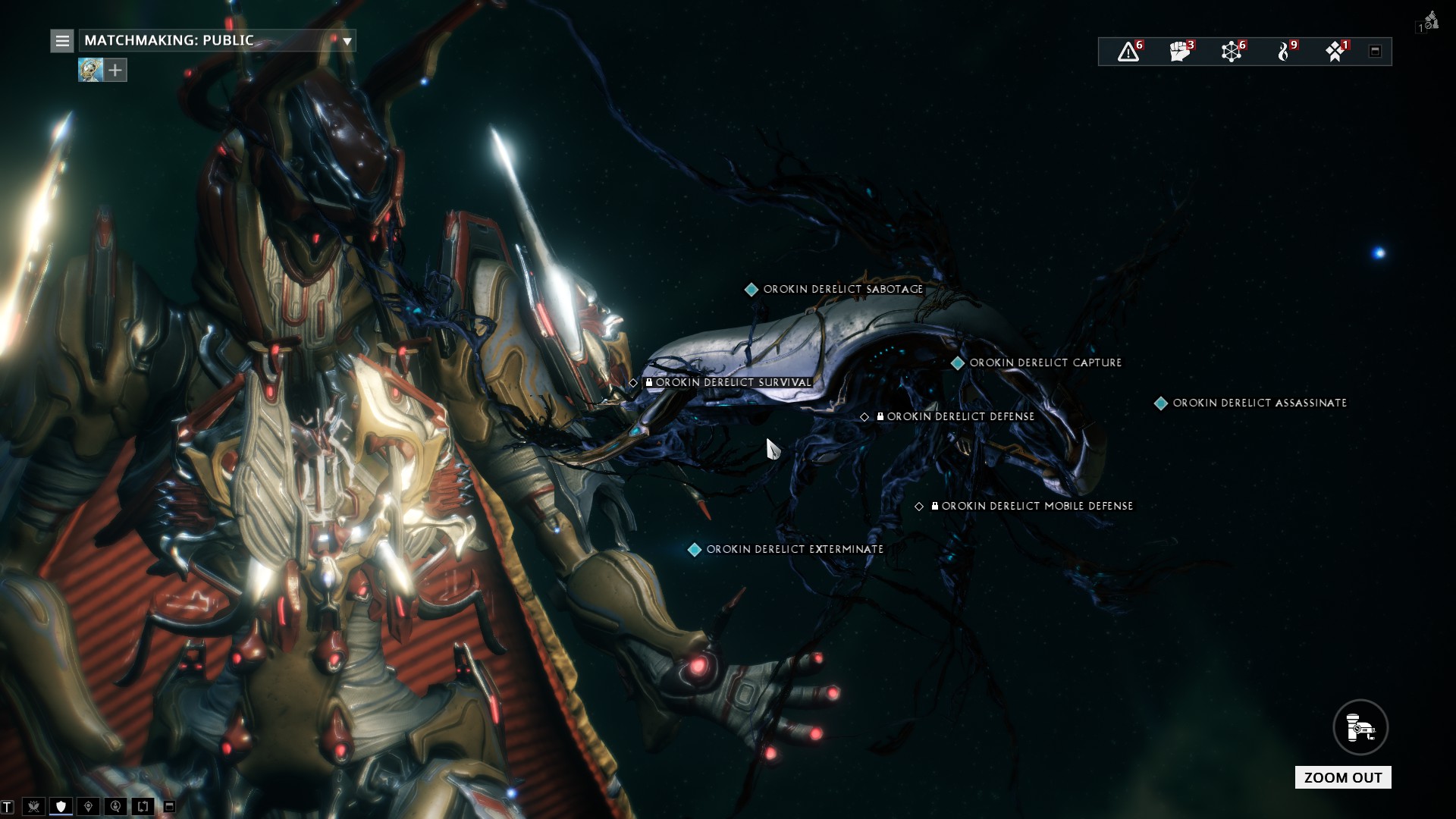
Corrupted Mods
Corrupted Mods are Nightmare Mods min-maxing evil twins. These suckers still affect multiple elements of Warframes and weapons, but where the hard-won Nightmare Mods provide two benefits, their Corrupted counterparts raise one statistic while lowering another. “Overextended,” for instance, will raise your Warframe’s power range by 90 percent at its maximum level but lower its power strength by 60 percent.
The trade-off is that Corrupted Mods provide much higher bonuses than any other Mods in the game. Not to mention certain Warframes and weapons won’t be as affected by certain downgrades as others. The stealth-focused ‘frame Loki, for example, needs high energy efficiency and power duration to keep his key power, Invisibility, active. So “Narrow Minded” - which raises power duration but lowers power range - doesn’t downgrade Invisibility at all.
Earning these special Mods is slightly complicated - even for Warframe. They’re only found as rewards for special, optional objectives in missions inside a zone called the Orokin Derelict.
You can access the Derelict from the star map like any planet, but can’t go inside it without single-use Orokin Derelict keys. You can buy blueprints for these keys - which correspond to different mission types on the Derelict - from the marketplace. You can then craft them on your ship’s Foundry using a common resource called Nav Coordinates.
These aren’t the only keys you’ll need, however. There are four more items called Dragon Keys that must be used to unlock hidden vaults during Derelict missions. There are four keys, and which one the vaults need are randomized, so playing with a full team of four players - each with a different Dragon Key - is practically a must.
Don’t worry if you don’t have a regular group of Warframe friends, either. Just check the in-game “Recruitment” channel in the bottom-left of the screen. It’s usually full of people looking for partners to carry specific keys. And if nobody’s asking, you can always offer to host the group yourself.
You equip Dragon Keys the same way you would health packs, Codex Scanners, and any other consumables. Depending on the Dragon Key you have equipped you’ll also be subject to negative modifiers that reduce your damage, speed, shields, or health - so be careful.
Once the correct key has been consumed, simply complete the mission to collect your random Corrupted Mod. Whichever keys weren’t correct won’t be consumed, either, so you can continue to run and rerun Derelict missions without re-crafting your key until necessary.
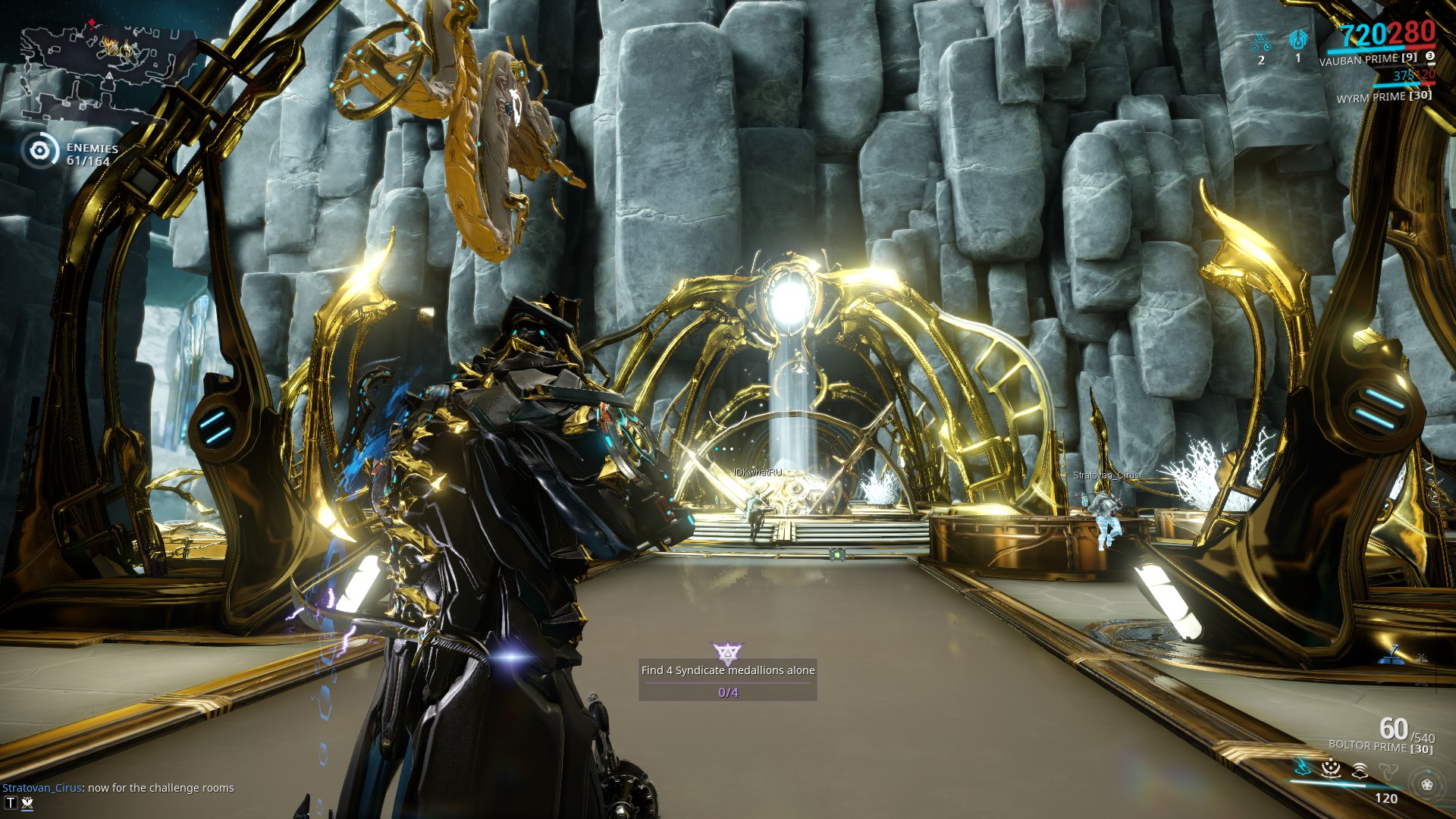
Exilus Mods
Exilus Mods are more like several categories of Mod all rolled up into one, with the unique ability to fit in the Exilus slot on any Warframe. They can still be added to normal Mod slots, too, but the freedom of placement allows players to add a bit more utility to their loadouts. Mods with the Exilus modifier are marked by a small symbol near the center-top of their icons.
Warframes always begin with their single Exilus Mod slot, located to the right of their Aura Mod slot, locked. Unlocking them requires special items called Exilus Adapters. You can acquire their blueprints from Teshin the PVP vendor, from the NPC Cephalon Simaris at any Relay, or from certain missions and quests. Sortie missions might also drop the item fully constructed.
Drift Mods are a special subcategory of Exilus Mods. They’re very similar to Nightmare Mods, in that they provide dual benefits to their users. Yet the process of getting them is even more difficult and complicated.
After completing the main story quest The Second Dream, players gain access to a new “planet” called Lua. This is actually a modified version of Earth’s moon and a fairly high-level zone in Warframe. More importantly, any mission you partake in on Lua has the chance of housing a “Hall of Ascension.”
These are special rooms with unique puzzles - many of which require (or at least encourage) co-op partners - so it’s often best to go with a group when hunting for Halls of Ascension.
Which of the Halls appear on missions to Lua is random, but the prizes they award are not. There are seven possible puzzles corresponding to seven possible Drift Mods, and depending on which puzzle you complete, you’ll get the Drift Mod that corresponds to that type. You can find a full list of the puzzles here.
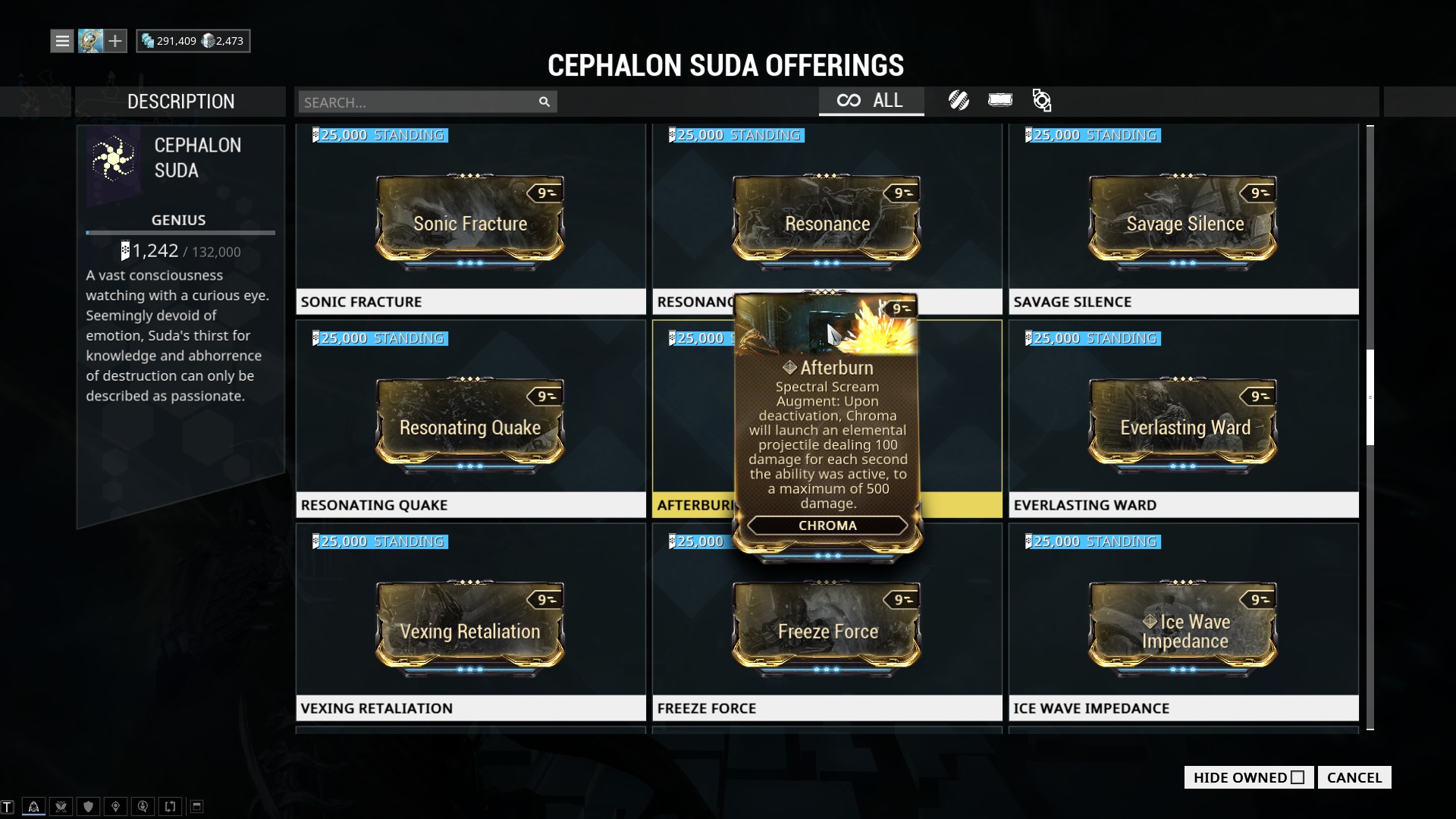
Augment Mods
Augments are a unique class of Mods that don’t just improve equipment statistically. They add special effects and abilities to specific Warframes and armaments instead. As such, any one Augment can only work with its specifically named weapon or Warframe. “Fatal Teleport” is only available on Ash and Ash Prime, for instance, while “Pilfering Swarm” is exclusive to Hydroid and Hydroid Prime, and so on.
Augment Mods are exclusively purchased with reputation at different Syndicates. To buy them, you’ll need to pledge yourself to a specific Syndicate, rise through its ranks, and earn enough reputation to purchase the desired Mods. Different Syndicates sell different Augments, however, so you won’t be able to earn every Augment by just playing for one faction.
Syndicates can be found at the public player spaces called Relays on Mercury, Venus, Earth, Saturn, Europa, Eris, and Pluto. There you can also speak to the vendor called Teshin, who will sell you PVP-only Augments in exchange for PVP reputation.
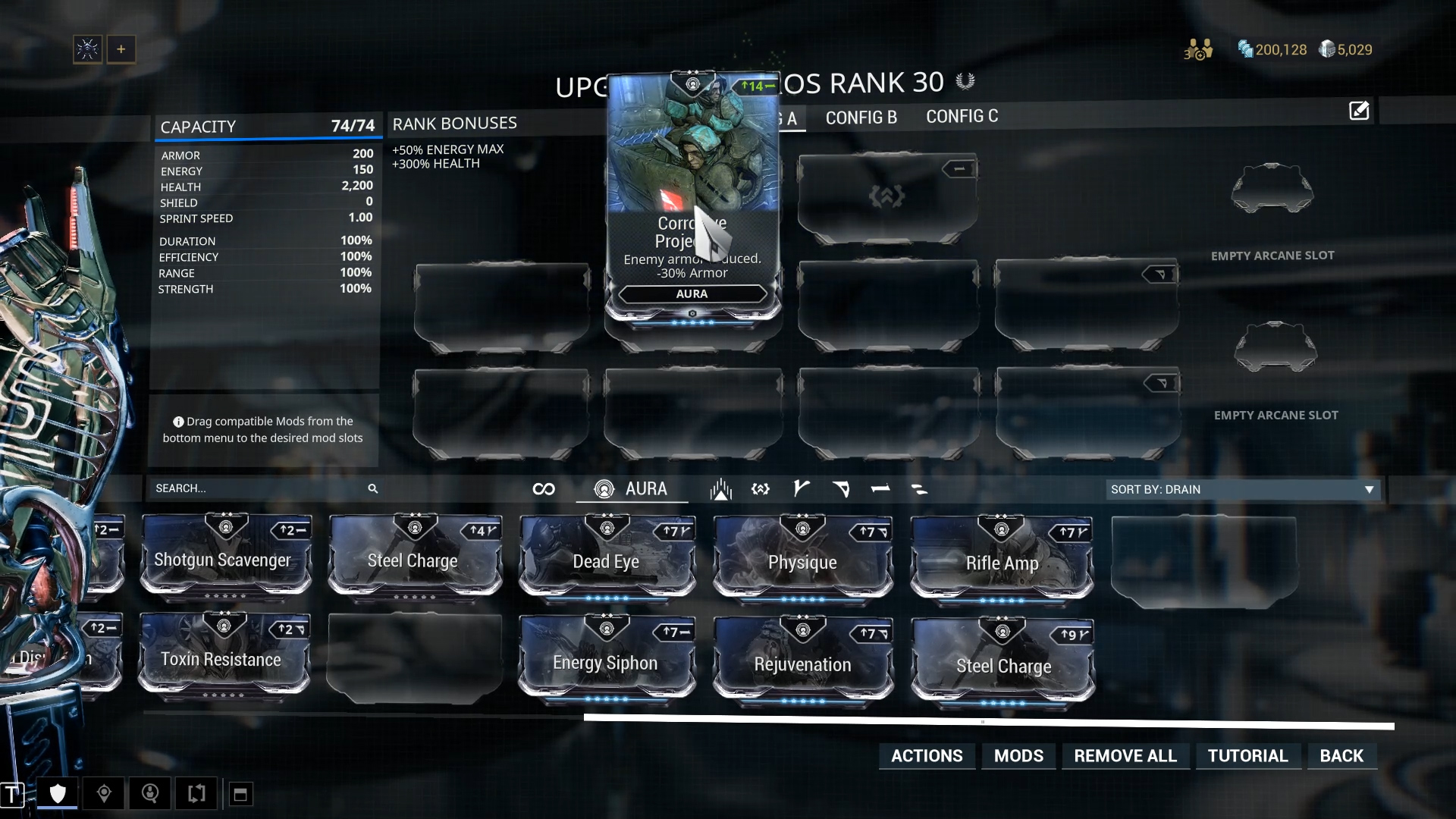
Aura Mods
Aura Mods are doubly useful items. Not only do they benefit their wearer and that player’s entire team during a mission, they actually increase the number and quality of other Mods you can equip to a given Warframe.
Their specific benefits vary, but include things like regenerating energy, regenerating health, or increasing damage with rifles and other weapons. Because Auras affect every member of your squad, these bonuses can actually stack. So if four players equip “Corrosive Projection” - which decreases enemy armor throughout an entire mission - it will be four times more effective than just one player equipping the Mod.
Right now, Aura mods are almost exclusively earned as rewards in time-limited Alert missions.
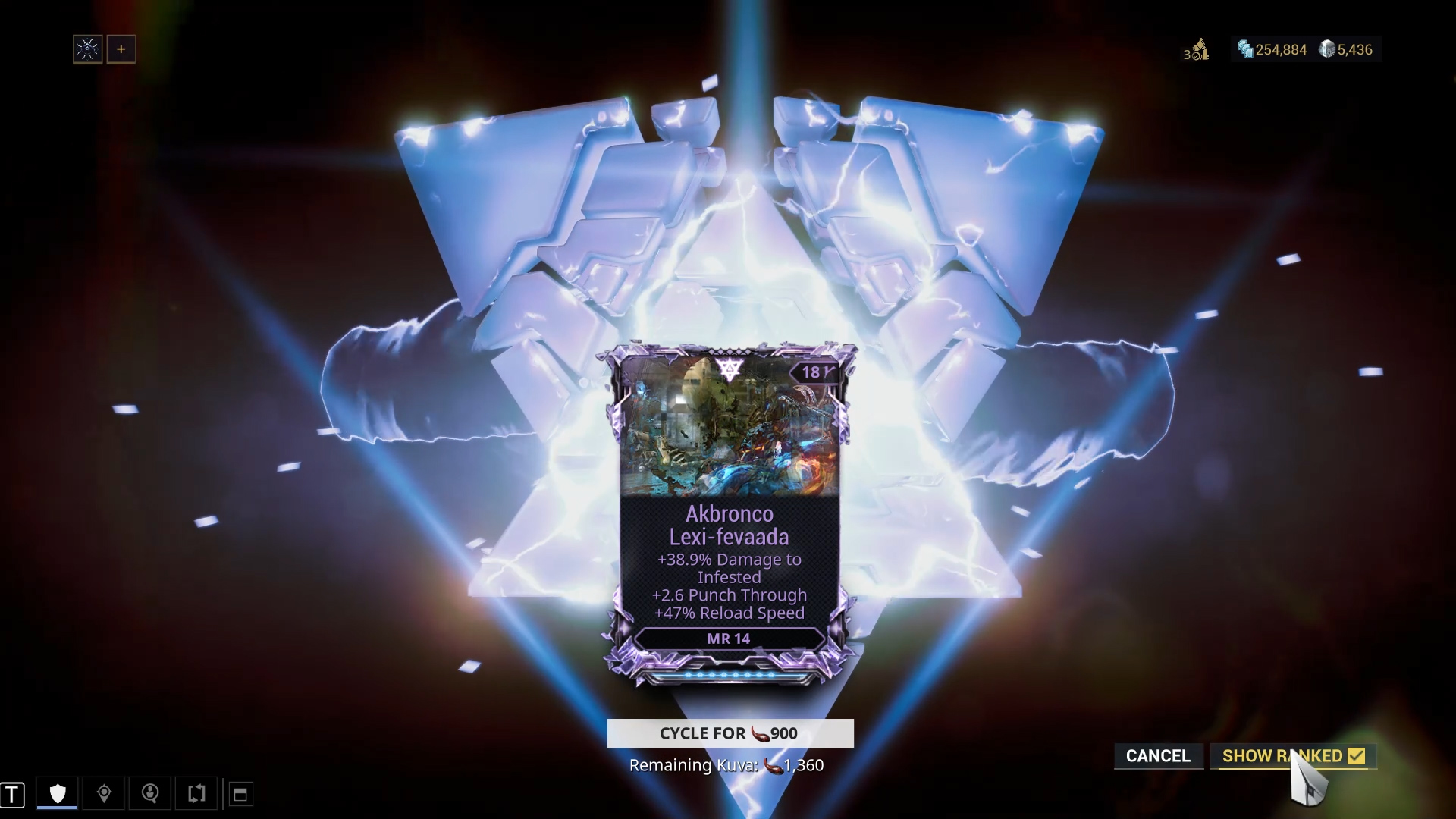
Riven Mods
Riven Mods are unlike anything else in Warframe. Whereas every other Mod, weapon, item, and mech in the game comes with predetermined stats and values that are the same for all players, Riven Mods are mostly randomized. Think of them as a more traditional sort of loot - like the kind found in Diablo or World of Warcraft.
Furthermore, Riven Mods can only be obtained after completing the main story quest The War Within. After which you’ll actually get one Riven Mod for free. From then on, however, Riven Mods are mostly acquired by completing extremely high-level daily mission chains called Sorties. You can see each day’s Sortie in the top-right toolbar from the main star map.
Riven Mods don’t actually provide any benefits when you first acquire them. Their descriptions will read as “Veiled” and issue a specific challenge that you need to complete to unlock their true potential. Unfortunately, you need to have the useless, Veiled Riven Mod equipped while completing the challenge. Once that’s complete, however, the Mods will reveal up to four positive and/or negative effects.
You’re not necessarily stuck with these effects, however. Rivens can be brought to your ship’s Mod station to have their attributes “cycled.” Cycling re-rolls the Mods’ traits and mathematical values, but not the weapon that item is tied to - so an Akbronco Riven will remain an Akbronco Riven even after re-rolling. The process also gets more expensive with every cycle.
Current page: Warframe Mods: Acquiring Different Mods
Next Page Warframe Mods: Applying and Combining ModsWeekly digests, tales from the communities you love, and more
Steven is currently the Senior Managing Editor at Fanbyte, but was formerly a freelance journalist with bylines at Ars Technica, PC Gamer, Dorkly, Waypoint, Rock Paper Shotgun, and GamesRadar.


